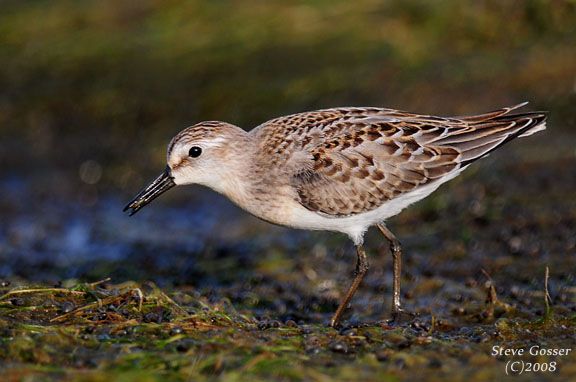
For two years Guy Beauchamp carefully watched the behavior of migrating semipalmated sandpipers on the tidal flats at the Bay of Fundy. He noticed the birds were doing something that no one had ever reported.
The sandpipers on the edge of the flock kept their heads up while feeding. They were always on the lookout for danger, especially for merlins or peregrines that could easily snatch one of them. Meanwhile the sandpipers in the middle were more relaxed and kept their heads down most of the time. It turns out the birds in the middle were eating different food than the ones on the edges.
The birds on the edge of the flock pecked quickly at amphipods (similar to tiny shrimp) that were easy to see. Their sentinel behavior made it safe for those in the middle to swish their beaks back and forth and filter the tidal slurry of diatoms (algae) and phytoplankton. Swishing behavior wouldn’t have been possible if the flock hadn’t posted sentinels. The birds had the advantage of living in a group.
This semipalmated sandpiper is alone, feeding with his head up, and probably has an amphipod in his beak.
I’ll bet he’d like to feed in the middle of the flock if he could.
Read more about this study here in Science Daily.
(photo by Steve Gosser)
Wonder if they take turns?
I wondered that too!